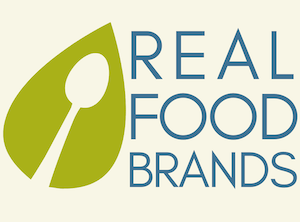We’ve been through a lot of changes in the past few years, and as a result, consumer behaviors are shifting. But as a food business owner how do you know what changes are temporary and what changes are here to stay? And how can you meet the evolving needs of your consumers?
In Episode 103 of the Real Food Brands Marketing Podcast, host and Food Brand Strategist Katie Mleziva sits down with Sarah Marion, the Director of Syndicated Research at Murphy Research. Sarah shares how consumers have shifted attitudes and behaviors related to food, fitness, and mindset over the past few years of pandemic-living as well as considerations for food business owners who want to meet these changing needs.
What Is Syndicated Research?
Syndicated research is the name for the type of research a firm conducts to sell, rather than primary research a specific company contracts with them to conduct on the company’s behalf. For Sarah, that means setting up the studies, generating reports, updating the data portal with findings they’ve collected, and sharing the learnings. Murphy Research’s findings are collected in the State of Our Health tracker.
“Personally and culturally, the pandemic prompted really rapid changes in both attitudes and behaviors around food, food sourcing, how we’re cooking, who we’re feeding, where we’re eating…and those changes go beyond food,” Sarah says. Even more interesting, she adds, “a lot of behaviors that initially seemed temporary have become really long-lasting and established.” People have had the time and space to reassess their values and priorities, and health and diet have become a higher priority for more people in some way.
New Consumer Behaviors
One of the biggest changes is the increasing number of people cooking at home. Sarah’s research indicates that trend is here to stay, as now that more people have the know-how and tools so they are more likely to whip up something on a weeknight or for breakfast instead of going out to eat.
Another trend is the number of nutrition-conscious consumers out there. “The market for better-for-you has gotten bigger,” Sarah says, “it’s true across all age groups but the gains have been much larger among younger consumers.” If you’re thinking about your ideal consumer, you may need to alter or expand who you have in mind to reflect these changing demographics who value nutrition but also convenience foods like dips, prepared meals, and bars.
Buying organic, sustainability, natural, and local callouts have all seen an uptick with younger consumers that looks like it’s here to stay. Generally, the highest degree of changes are seen in the younger age ranges because their lives are changing at such a fast pace anyway. Attitudes and behaviors related to food are more steady with the 40+ crowd, however, this group has become increasingly fitness-conscious, and has also been more willing to buy online.
There are many more interesting and actionable insights to hear, so be sure to listen to the full episode to learn more and start thinking about how it relates to your brand and the people you serve.
Now, let’s go shake up shopping carts!
Quotes:
“Personally and culturally, the pandemic prompted really rapid changes in both attitudes and behaviors around food, food sourcing, how we’re cooking, who we’re feeding, where we’re eating, and those changes go beyond food.” – Sarah Marion
“A lot of consumer behaviors that initially seemed temporary have become really long-lasting and established.” – Sarah Marion
“The market for better-for-you has gotten bigger—it’s true across all age groups but the gains have been much larger among younger consumers.” – Sarah Marion
In This Episode:
- What is syndicated market research?
- The behavior that’s been leading many “new-to-natural” shoppers into healthier eating.
- How an increase in mindfulness is playing a role in food choices.
- How each generation has adapted in terms of becoming more health-focused.
- Why younger buyers value convenience and what they are buying.
- How people are aligning what they eat with their values.
- Where you can learn more about The State of Our Health study.
Resources:
- Information on The State of Our Health Study from Murphy Research
- Connect with Sarah on LinkedIn
- The Real Food Brands Marketing Round Table
- Brand Strategy Streamlined Course Details
- Download Your Free Brand Strategy Checkup
- Book a 60-minute 1-on-1 Brand Strategy session with Katie
- Connect with Katie on Instagram


